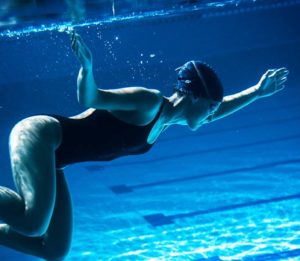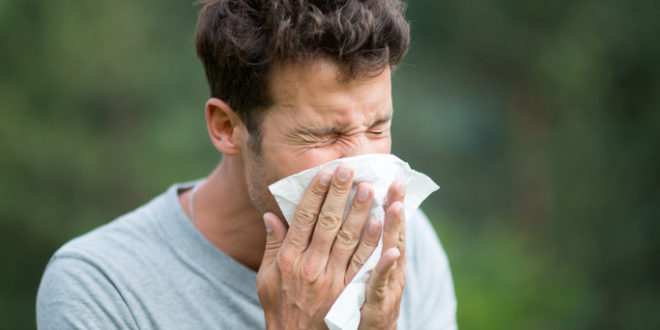by Michelle Sutton-Kerchner
Don’t sideline fitness during your allergy season. Fight allergies with exercise and get back in the game …
When already trying to catch your breath from congestion and sneezing, exercising may seem too much of a chore. However, it can bring relief.

Top Ways Exercise Helps
- Cardio workouts are thought to calm inflammatory proteins in the nasal passages to improve breathing and reduce sinus pressure.
- The increased blood flow during exercise allows allergens to move quickly from the body to be eliminated by the kidneys and skin (through sweat).
- Healthy post-workout fatigue can replace drowsiness brought on by allergies and antihistamines for a more restful night’s sleep.
- Stronger lungs improve oxygen capacity, which is especially helpful for those who suffer from allergy-induced asthma.
- Exercise increases stamina, which often deteriorates from allergy symptoms, including poor sleep quality.
- A workout can lift spirits dampened by sneezes, sniffles, and overall discomfort.
- Vigorous physical activity often clears sinus passages for better breathing.
The Most Beneficial Workouts for Allergies
Despite nice weather, an indoor workout is best during your peak allergy season. As a Center member, you have the advantage of a clean, filtered environment, which allows an allergy-free workout every time. The Center’s regulated temperature also reduces the likelihood of extreme allergic reactions common with hot weather workouts, such as exercise-induced anaphylaxis.
- Adjust your fitness routine to accommodate your current energy level and symptoms. According to the American College of Allergy, Asthma & Immunology, overdoing physical activity could exacerbate symptoms rather than help.
-

Break often. Stay hydrated. Decrease reps or duration, if necessary. Allow additional water breaks to hydrate and moisten a dry, irritated throat. Better to take a few breaks during your session than skip exercise altogether. Think of it as a form of allergy-induced interval training, with emphasis on low-intensity segments (water breaks).
- Simple movements get blood pumping, which allows healthy circulation to help eliminate allergens. Go easy, if you must. Just keep moving.
- Try exercises that promote better breathing. Think yoga and Pilates for true cleansing breaths. Some yoga asanas (poses) are known to decrease sinus pressure and improve congestion. Ask a yoga instructor for suggestions!
-

Clear your head with a refreshing dip. Aquatic classes and training provide a helpful workout environment for allergy sufferers. The humid, warm air helps clear sinuses. Some asthma sufferers also find warm, moist air eases breathing. The quick pre-pool shower washes away pollen buildup from your skin and hair.
- Always include a warm-up with gentle stretches. The American Academy of Allergy, Asthma & Immunology indicates warm-ups help reduce allergy symptoms.
Post-workout Tip
After a workout, hit the Center’s steam room or indulge in a steamy shower followed by cooler water. This temperature shift further loosens mucus in the sinuses and bronchial tract for better breathing.
 Gain All-Terrain Experience
Gain All-Terrain Experience
If training for an outdoor event, you don’t have time to waste blowing your nose after every rep. You need to get down to business. Do your main routine in climate-controlled, filtered air (the Center). Ask a personal trainer for sport-specific exercise to make the most of your outdoor routine. Then, head out for specific training on the field, pavement, or with your team. Your indoor workout should help you better tolerate allergens when they are in your midst.
Lace up and breathe on!
Sources
Image Credits
Cyclist water break: pixabay.com/en/fitness-man-bike-mountain-trail-1541051
Baseball pitcher: pixabay.com/en/baseball-pitcher-pitching-action-1599580
 Fitness & Wellness News Your Source for Fitness News, Wellness News, Health News, and Nutrition News!
Fitness & Wellness News Your Source for Fitness News, Wellness News, Health News, and Nutrition News!




